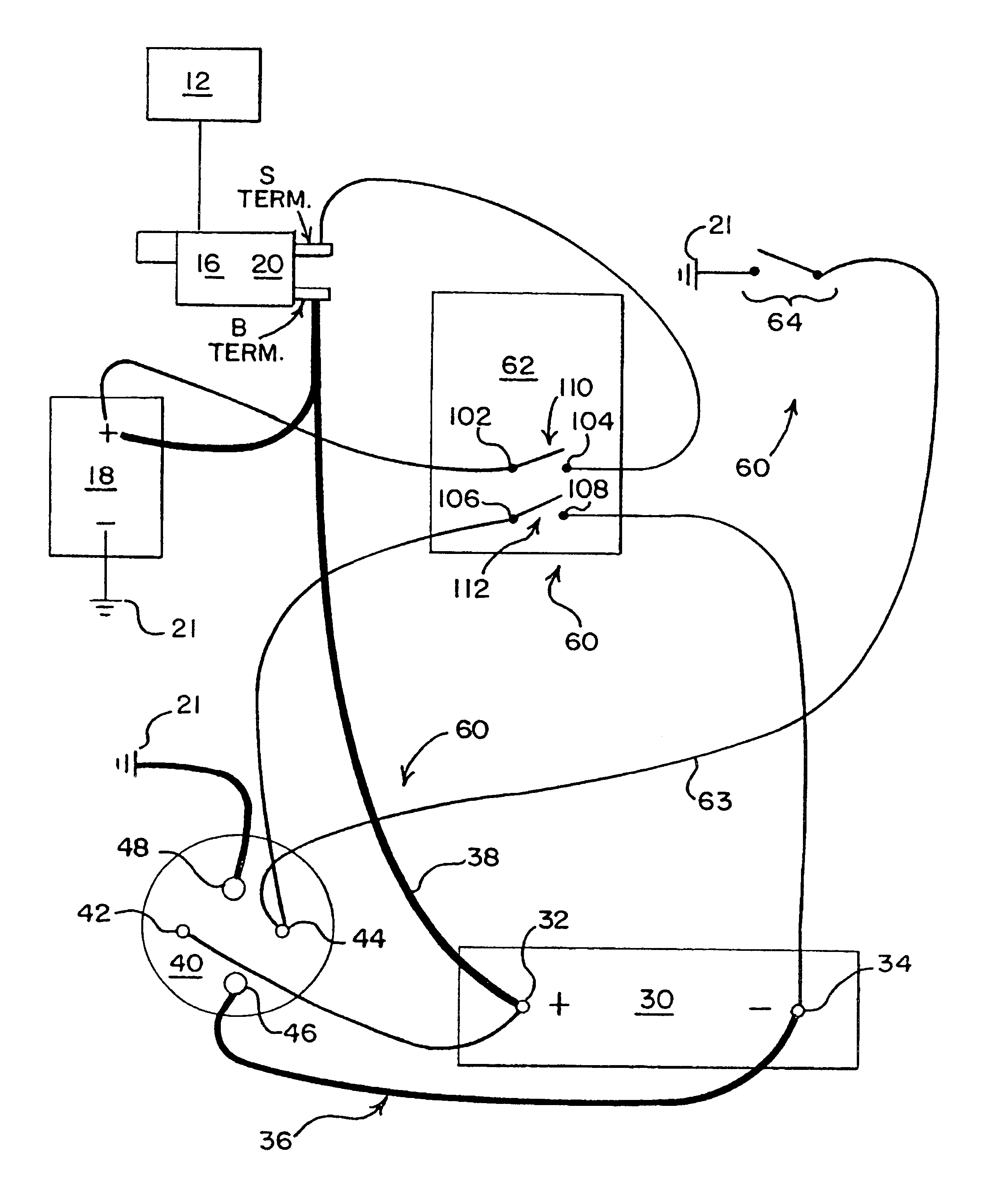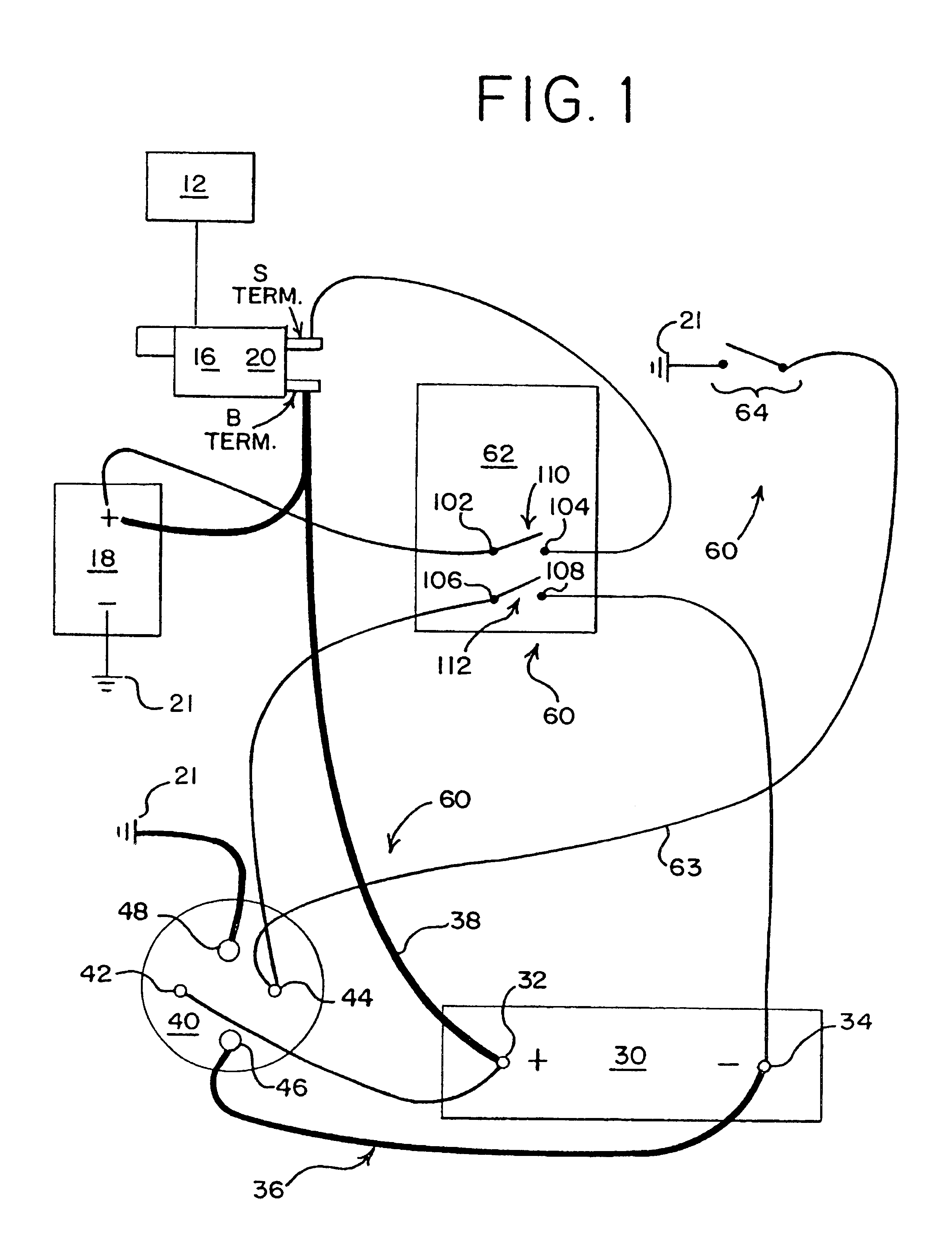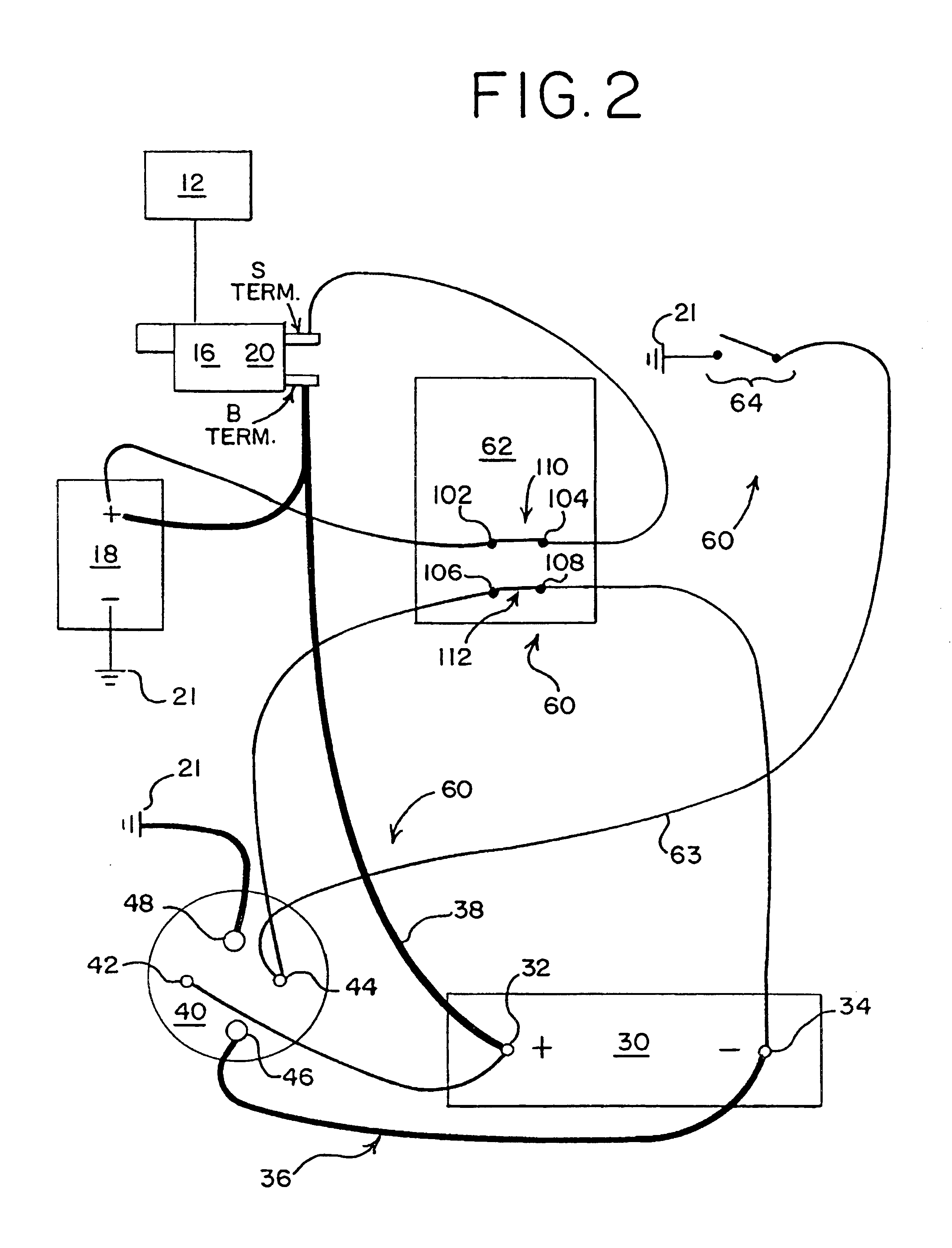Vehicle with switched supplemental energy storage system for engine cranking
- Summary
- Abstract
- Description
- Claims
- Application Information
AI Technical Summary
Benefits of technology
Problems solved by technology
Method used
Image
Examples
Embodiment Construction
Turning down to the drawings, FIGS. 1-4 show an electrical system of a vehicle (not shown) that includes an internal combustion engine 12. The engine 12 can take any suitable form, and may for example be a conventional diesel or gasoline engine. The engine 12 is mechanically coupled to a cranking motor 16. The cranking motor 16 can take any suitable form, and it is conventionally an electrical motor that is powered during cranking conditions by current from one or more storage batteries 18 such as conventional lead-acid batteries. Current from the batteries 18 is switched to the cranking motor 16 via a switch such as a conventional solenoid switch 20. In operation, the engine is operably moved between a running condition and an off condition.
All of the elements 12 through 20 described above may be entirely conventional, and are well-known to those skilled in the art. The present invention is well adapted for use with the widest variety of alternative embodiments of these elements.
In...
PUM
 Login to View More
Login to View More Abstract
Description
Claims
Application Information
 Login to View More
Login to View More - R&D Engineer
- R&D Manager
- IP Professional
- Industry Leading Data Capabilities
- Powerful AI technology
- Patent DNA Extraction
Browse by: Latest US Patents, China's latest patents, Technical Efficacy Thesaurus, Application Domain, Technology Topic, Popular Technical Reports.
© 2024 PatSnap. All rights reserved.Legal|Privacy policy|Modern Slavery Act Transparency Statement|Sitemap|About US| Contact US: help@patsnap.com










